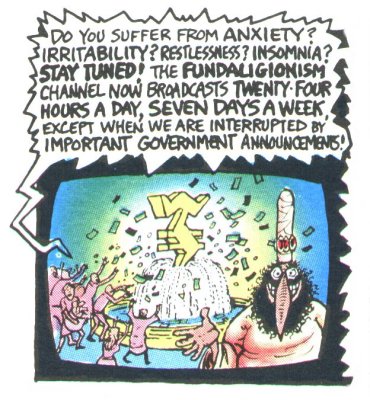 Historian and archivist James Danky spoke last week at Lawrence University on the topic of his new book, Underground Classics: The Transformation of Comics into Comix. As others have written, Danky's talk was unfortunately lazy and badly presented. For someone with little or no familiarity (but a great deal of interest) in comix, his presentation was simultaneously over- and underwhelming. At times, I felt like he was addressing an audience who had already read his book and the genre, and at other times, I was embarrassed at the lack of research he had done in his attempts to legitimize the genre to a group of art students.
Historian and archivist James Danky spoke last week at Lawrence University on the topic of his new book, Underground Classics: The Transformation of Comics into Comix. As others have written, Danky's talk was unfortunately lazy and badly presented. For someone with little or no familiarity (but a great deal of interest) in comix, his presentation was simultaneously over- and underwhelming. At times, I felt like he was addressing an audience who had already read his book and the genre, and at other times, I was embarrassed at the lack of research he had done in his attempts to legitimize the genre to a group of art students.
However, I was able to glean from his lecture a sense of the way in which independent printing presses would pop up to print these subversive publications, which were often censored or banned because of their lurid content. This made me think about the nature of print arts in general as a mass communication medium. Comix artists had a desire to print and distribute their works and conservative authorities were seriously troubled by their existence.
It's interesting to me how the very act of printing copies of an image lends it a certain power that can make it both a tool (for those who use it) and a threat (for those who oppose it). This past term, I've been taking an introductory printmaking course (with Ben Rinehart), which has caused me to think of printmaking in terms of media art. Many of the processes are surprisingly simple and involve the use of a few very basic chemical processes to make many, many copies of the same image, which can be viewed by many people. We have this strange, deep-rooted association with printed materials (most of us have learned from textbooks from an early age) and ascribe to them a certain power, even if we've just created them ourselves.
At the talk, one person asked if online comics are today's version of these early comix. It seems that there are definite parallels, especially as academia and mass media are shifting almost entirely to an online format. The ease and simplicity with which one can maintain a professional-looking website or blog and thus reach a wide audience is a parallel to the way commix artists used the mass print media formats of their day.
Image: Gilbert Shelton, Hallelujahgobble from Phineas Freek


The barriers between artist and audience were far vaster in the "comix" days with the artist needing the resources to take the work to print. The photocopier was revolutionary in its cheapness and immediacy. The Internet enables the artist direct communication with the audience. How not to take that for granted?
ReplyDelete